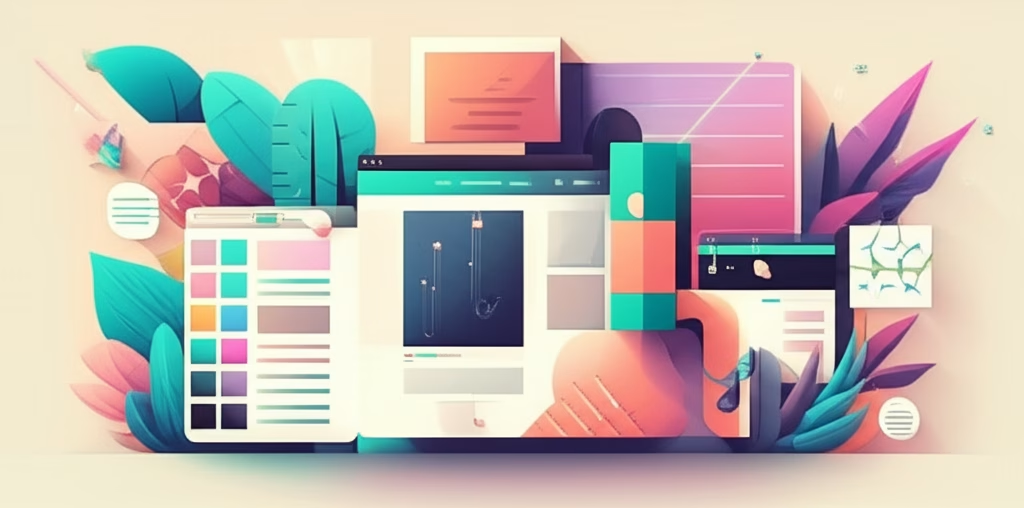Ready to dive into the exciting world of creating visual identities? Maybe you’ve seen amazing emblems for your favorite brands and wondered, “How do they do that?” Or perhaps you have an idea for your own project and need a unique mark to represent it.
Designing these powerful little symbols might seem tricky at first, but it’s a skill anyone can learn and enjoy. This guide is for you – the aspiring creator curious about how to bring ideas to life visually. We’ll walk through the basics, explore key concepts, and get you started on your journey to crafting memorable visual marks.
Table of Contents
What Exactly is a Logo?
At its heart, a logo is a visual symbol or emblem that represents a company, organization, product, service, or even an individual. Think of it as the face of a brand – the quickest way for people to recognize and remember who or what it is.
It’s more than just a pretty picture; it’s a shorthand for everything a brand stands for. It communicates personality, values, and purpose without needing words. A well-designed mark creates instant recognition and builds trust over time.
These visual identifiers come in many forms. Some use just text, like the famous Coca-Cola script. Others use only a symbol, like the Apple apple. Many combine both, pairing an icon with the brand name, like the Nike swoosh and text.
Understanding these different types helps you choose the right approach for the identity you’re trying to build. Each style has its strengths depending on the brand’s needs and audience.
Why is Designing a Great Logo So Important?
In today’s busy world, first impressions matter a lot. Your logo is often the very first thing someone sees of your brand. A strong, professional visual mark makes you look credible and established right away.
It helps you stand out from the crowd. There are countless businesses and projects out there, all competing for attention. A distinctive and memorable emblem helps you cut through the noise and stick in people’s minds.
A good logo builds recognition and loyalty. When people repeatedly see a consistent, appealing mark associated with positive experiences, they start to trust and connect with the brand. This visual cue becomes a powerful anchor for customer relationships.
Furthermore, it sets the tone for your entire visual identity. The colors, fonts, and style used in your emblem often inform the design of your website, packaging, marketing materials, and more. It’s the foundation of consistent branding.
Ultimately, investing time and thought into creating an effective logo is investing in the long-term success and perception of your brand. It’s a crucial piece of communication that works silently but powerfully.
Core Principles of Effective Logo Design
Creating a compelling visual mark isn’t just about drawing something cool. There are fundamental ideas that guide successful design. Understanding these principles will help you create marks that are not only attractive but also functional and lasting.
Let’s look at some key concepts that professional designers consider when crafting these important symbols. Applying these ideas will elevate your work and help you make better design choices.
- Simplicity: Keep it clean and uncluttered. Simple marks are easier to recognize, remember, and reproduce across various sizes and applications. Avoid unnecessary details that can get lost or make the emblem look busy.
- Memorability: Can people remember it after seeing it once? A memorable emblem is often unique, simple, and perhaps has a clever twist or association that helps it stick in the mind. It should leave a lasting impression.
- Timelessness: A great emblem should stand the test of time. Avoid trendy elements that will quickly look dated. Aim for something classic and enduring that won’t need a complete overhaul every few years.
- Versatility: The emblem needs to work everywhere – on a tiny app icon, a large billboard, a business card, a website, and even embroidered on a shirt. It should look good in full color, black and white, and work well at different sizes without losing clarity.
- Appropriateness: The mark should fit the brand it represents. The style, colors, and imagery should be suitable for the industry and target audience. A mark for a children’s toy company will look very different from one for a law firm.
Applying these principles requires careful thought and iteration. It’s a process of refining your ideas until you arrive at a mark that meets all these criteria effectively.
Common Mistakes in Logo Design and How to Avoid Them
When you’re just starting out, it’s easy to fall into common pitfalls. Recognizing these mistakes early can save you a lot of time and help you create stronger work. Here are some frequent errors and tips on how to steer clear of them.
Avoiding these traps involves patience, research, and a willingness to iterate on your ideas. Don’t expect your first concept to be perfect.
- Using Raster Images or Low Resolution
How to Avoid: Always design your primary mark as a vector graphic. This allows it to be scaled infinitely without losing quality, essential for versatility. Use software like Adobe Illustrator, Affinity Designer, or free alternatives like Inkscape. - Copying or Too Closely Resembling Others
How to Avoid: Research existing marks in the relevant industry thoroughly. Your emblem needs to be unique to avoid confusion and potential legal issues. Aim for originality that truly represents the specific brand’s identity. - Overly Complex or Detailed Designs
How to Avoid: Refer back to the principle of simplicity. Too many elements, colors, or intricate details make an emblem hard to reproduce at small sizes and difficult for people to remember. Strip away anything unnecessary. - Ignoring Versatility Needs
How to Avoid: Before finalizing a design, test it in various scenarios: black and white, small sizes (like an app icon), on different backgrounds. Does it hold up? If not, simplify or adjust. - Choosing Inappropriate Fonts or Colors
How to Avoid: Research color psychology and typography basics. Select fonts and colors that align with the brand’s personality and industry. A playful font might not suit a bank, just as neon green might not suit a luxury product. - Not Considering the Future
How to Avoid: Think about where the brand might go. Will the emblem still be relevant if they expand services or target a different audience later? Aim for a design with some flexibility and longevity.
How to Apply Logo Design Principles to Your Projects
Now that you know what makes a good visual mark and what to avoid, how do you actually start creating one for a real project? Here’s a step-by-step guide to get you going.
This process involves research, creative exploration, and refinement. Don’t rush through the steps; each one is important for a successful outcome.
- Understand the Brand: Before you even sketch, learn everything you can about the company, product, or person you’re designing for. What do they do? Who is their audience? What are their values and personality? What makes them unique? This research is the foundation of your design.
- Research the Competition: Look at the emblems of other businesses in the same field. What works? What doesn’t? How can your design stand out while still fitting the industry? This helps you find your unique space.
- Brainstorm and Sketch Ideas: Don’t jump straight to the computer. Grab a notebook and pen and sketch lots of rough ideas. Explore different concepts, shapes, and symbols based on your research. Don’t censor yourself – just get ideas down.
- Develop Concepts Digitally: Select your strongest sketches and start creating them in vector design software. Refine the shapes, experiment with different fonts (typography is key!), and explore color palettes that fit the brand’s identity.
- Test for Versatility: See how your concepts look in black and white, reversed out (light on dark), and at very small sizes. Does it remain legible and recognizable? This testing phase is crucial before presenting options.
- Gather Feedback: Share your best concepts with others, especially people who represent the target audience. Be open to constructive criticism and be prepared to make revisions based on feedback.
- Refine and Finalize: Based on feedback and your own testing, polish the chosen design. Ensure all elements are perfectly aligned, curves are smooth, and colors are spot-on. Prepare the final files in various formats (vector, different color versions, etc.) for different uses.
Frequently Asked Questions (FAQ) about Logo Design
Q: How long does it take to design a logo?
A: It varies greatly depending on complexity and process, but a thoughtful design can take anywhere from a few days to several weeks, including research, sketching, digital work, revisions, and finalization.
Q: Do I need expensive software to start designing?
A: No, you can start sketching with just paper and pen. For digital work, while professional tools like Adobe Illustrator are standard, free vector software like Inkscape is a great place to begin learning the necessary skills.
Q: Should my logo describe exactly what the company does?
A: Not necessarily. While some emblems are literal, many successful ones are abstract or symbolic. Focus more on conveying the brand’s personality, values, and uniqueness rather than just its function.
Q: How many colors should I use in a logo?
A: It’s often best to keep it simple, usually using one to three main colors. Remember, the emblem needs to work well in black and white too, so the design should rely on shape and form, not just color.
Wrapping Up Your Logo Design Journey
You’ve taken the first step into understanding the world of creating visual marks for brands. We’ve covered what these important symbols are, why they matter so much, the core ideas behind great design, common mistakes to avoid, and a practical process for bringing your ideas to life.
Remember, becoming a skilled designer takes practice and patience. Don’t be discouraged if your first attempts aren’t perfect. Each project is a learning opportunity. Keep experimenting, keep learning, and keep creating.
The most important thing is to start applying what you’ve learned. Pick a project, follow the steps, and see what you can create. The more you practice, the better you’ll become at crafting compelling visual identities.



